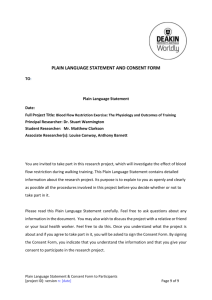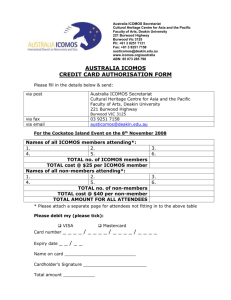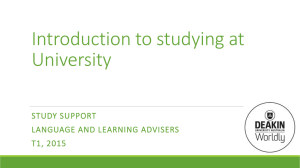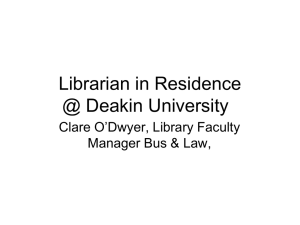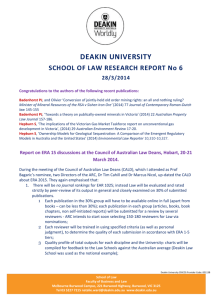plain language statement and consent form
advertisement
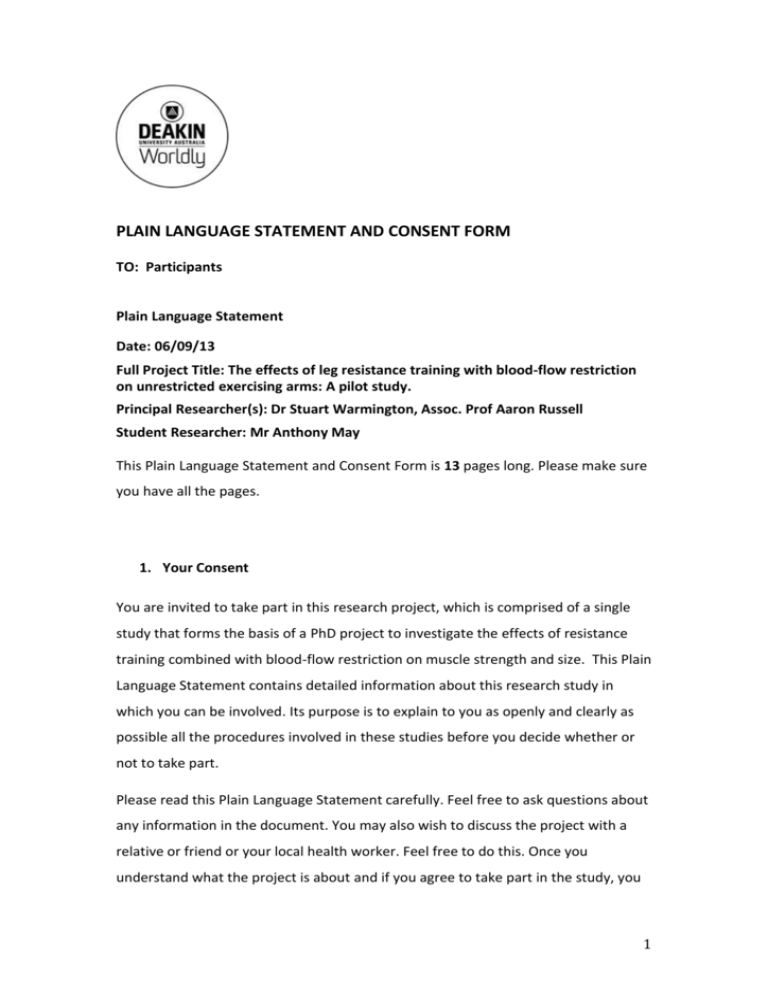
PLAIN LANGUAGE STATEMENT AND CONSENT FORM TO: Participants Plain Language Statement Date: 06/09/13 Full Project Title: The effects of leg resistance training with blood-flow restriction on unrestricted exercising arms: A pilot study. Principal Researcher(s): Dr Stuart Warmington, Assoc. Prof Aaron Russell Student Researcher: Mr Anthony May This Plain Language Statement and Consent Form is 13 pages long. Please make sure you have all the pages. 1. Your Consent You are invited to take part in this research project, which is comprised of a single study that forms the basis of a PhD project to investigate the effects of resistance training combined with blood-flow restriction on muscle strength and size. This Plain Language Statement contains detailed information about this research study in which you can be involved. Its purpose is to explain to you as openly and clearly as possible all the procedures involved in these studies before you decide whether or not to take part. Please read this Plain Language Statement carefully. Feel free to ask questions about any information in the document. You may also wish to discuss the project with a relative or friend or your local health worker. Feel free to do this. Once you understand what the project is about and if you agree to take part in the study, you 1 will be asked to sign the Consent Form. By signing the Consent Form, you indicate that you understand the information and that you give your consent to participate. You will be given a copy of the Plain Language Statement and Consent Form to keep as a record. 2. Purpose and Background Blood flow restriction exercise is a technique that results in reduced blood flow to muscles during exercise. This technique is used extensively in Japan where it is known as Kaatsu. Briefly, this technique requires a pressure cuff to be placed around an exercising muscle group. The cuff is then inflated to a point whereby blood flow is reduced. Participants then perform an exercise protocol at 20-30% of the largest weight they can lift (one repetition maximum – 1 RM) for 15-30 repetitions. Recent evidence suggests that when light-load strength training protocols are combined with blood-flow restriction, the gains in muscle strength and size may be as great as those for traditional heavy-load strength training. However, it is unclear why these adaptations occur. Recently, one published study found that by performing light resistance exercise training in an arm (which is too low to cause gains in muscle strength or size) and then performing blood-flow restriction training of the legs caused the arm to get stronger and larger. Therefore, the purpose of this research is to reproduce the outcomes of this previous research and to test whether these outcomes are repeatable and consistent. This project has important implications for our understanding of the requirements to improve muscle size, strength and function. It also has important implications for “at risk” populations who require improved muscular strength and functional capacity, yet are not capable of strength training using heavy loads. Such populations include those with, or recovering from, muscle-related injuries, and older adults. 2 A total of 16 people will participate in this project. You are invited to participate in this research project because you are a healthy male adult, aged 18-25 years, physically active with no history of regular strength training in the last six months, and free from any known musculoskeletal injuries, neurological injuries, or vascular diseases. You have been provided with this Plain Language Statement and Consent Form, the Consent Form needs to be completed and returned before you may be formally accepted to participate in a study. You will have been instructed about this process in your correspondence with the researchers. 3. Study outlines The project consists of a single study occurring for a total of 22 sessions that require your participation over 8 weeks. All sessions will be undertaken with researcher supervision and instruction at Deakin University, Burwood. The first session is a familiarisation session (approximately 90 minutes) that will begin with an initial screening procedure to ensure you are a suitable participant for the study. The familiarisation session exists to ensure that you can properly perform the required training movements and are comfortable and familiar with the testing equipment. It will also involve tests of muscle size and strength including a onerepetition maximum (1 RM) strength test to determine the training load to be used in the following training period. This session will be followed by seven weeks of training (3 days/week) then a last session to take final measurements of muscle strength and size. 3.1 Testing sessions Testing sessions (pre and post-training) will measure muscle strength and size. The pre-training testing will occur as part of the familiarisation session which will take approximately 90 minutes to complete while the post-training testing session will be performed following seven weeks of resistance training and will take approximately 70 minutes to complete. 3 3.1.1 Muscle size tests Both pre and post-training testing sessions will start by measuring your leg and arm circumference with a tape measure, and then muscle size will be measured using peripheral quantitative computed tomography (pQCT). pQCT is non-invasive and involves you inserting your arm into the opening of a ring with x-ray source and detectors, for scanning. This will involve remaining still for three to five minutes during the measurement. This process will then be repeated with your other arm then both legs. The pQCT scans will cause no pain or discomfort other than having to remain still. 3.1.2 Muscle strength tests Following muscle size measurements, muscle strength of both the arms and legs will be measured in two ways. First, the maximal isometric strength (i.e. contracting your muscles as forcefully as you can without moving the joint) of your arms and legs will be measured using a machine known as a dynamometer. This will require you to perform three contractions while seated at the dynamometer, pressing against a level, your limb will be held in a stable position and prevent joint movement while you contract as forcefully as possible for five seconds. You will be given a 90 second rest period between each effort for best performance. Finally, you will be required to perform two single-arm and two double-leg onerepetition maximum (1 RM) tests. The 1 RM test is a measure of the maximal weight you can lift with one repetition throughout a full range of motion. After a warm-up, a researcher will guide you to make an estimate on what you believe is your 1 RM strength, and this load will serve as your starting point. If you successfully lift one repetition, the weight to lift will be increased for the next single repetition attempt, if you fail, the load will be reduced accordingly. 1 RM testing with progressively heavier weights will continue until you reach the heaviest weight that you can lift with proper technique. You will be supervised and coordinated by a researcher at all times during this process. You will perform a 1 RM for a single-arm bicep curl on each arm separately, followed by a double-leg knee extension 1 RM, and then a double-leg knee flexion 1 RM. 4 3.2 Training sessions You will be required to participate in 20 training sessions over six weeks between familiarisation and post-training testing. There will be two separate groups in this study that will perform either BFR or non-BFR exercise and you will be randomly selected into one or the other. Both groups will be required to begin the session with a general five minute warm-up then perform bicep curl exercises on the dominant arm. You will be required to perform ten repetitions of bicep curls at 50% of your previously determined 1 RM; this will be repeated for three sets with a 3 minute rest in-between sets. Following this, both groups will be required to perform both double-leg knee extension and knee-flexion exercises at 30% of their 1 RM. You will be required to lift the weight for 30 repetitions for the first set then three more sets of 15 repetitions with 30 seconds of rest between sets. The order of knee-extension and knee-flexion exercises will alternate for each training session. The only difference between groups is that the BFR training group will have BFR applied to their upper legs during the leg exercises using specially designed cuffs. These cuffs will be inflated to a pressure equal to only 60% of the pressure required to completely restrict blood-flow. This pressure will be firm and remain continually applied throughout both leg exercises (approximately 14 minutes total). Session Type Number of Sessions Duration Familiarisation 1 90 min Training 20 30 min Post-training testing 1 70 min 22 12 hr 40 min Total 5 4. Possible benefits The main purpose of this research is to ensure that results from previous research can be reproduced. If this is the case then it is assumed that participants in the BFR group will receive muscle strength and size gains in the legs and also the trained arm, while the non-BFR group may receive little gains in leg and arm strength. Also, your participation throughout this study will provide important and valuable information regarding the benefits of BFR training on muscle strength and size development, which may go on to benefit the wider community by assisting with the development of rehabilitation programs or exercise performance. 5. Possible risks Considering the pre-testing screening, there are no foreseeable risks to your participation in this study. However, the strength exercises involve a risk of muscle soreness and stiffness, although this is unlikely due to the type of movements in the training program and testing sessions. The moderate cuff pressure (approximately 130 mmHg) combined with the moderate duration (approximately 14 minutes) of blood flow restriction during exercise has not been shown to result in any harmful acute or long-term effects. You may, although it is unlikely, experience dizziness, temporary numbness and slight discomfort in the occluded areas during exercise. Prior to being accepted into this study you will answer a series of questions asked by the researcher as part of the Adult Pre-exercise Screening System (APSS) tool to determine if there are any issues that may stop you from participating. The risks involved in this project are minimal because experienced staff will be conducting the tests using standard procedures. Previous studies in normal populations have failed to demonstrate health issues following blood-flow restriction strength training, and muscle tissue has a low oxygen tolerance time of up to four hours; therefore evidence suggests that blood-flow restriction exercise is not harmful, even in the long-term. 6 This research study involves exposure to a very small amount of radiation from pQCT scans of your body. As part of everyday living, everyone is exposed to naturally occurring background radiation and receives a dose of about 2 millisieverts (mSv) each year. The effective dose you will receive from all the pQCT scans of your body will be approximately 0.012 mSv. At these dose levels, no harmful effects of radiation have been demonstrated, as any effect is too small to measure. The risk is believed to be minimal. If you have been involved in any other research studies that involve radiation, please inform us. Please keep this Patient Information and Consent Form that includes information about your exposure to radiation in this study for at least five years. You will be required to provide this information to researchers of any future research studies involving exposure to radiation. You have the right to terminate testing or withdraw from the study at any time without adverse consequences to yourself or this study, in which case any information obtained from you will not be used further. 6. Privacy, confidentiality and disclosure of information Any personal information provided by you to the researchers involved with this project will remain confidential. It will only be disclosed with your permission, subject to legal requirements. All individual results will remain strictly confidential and no names will be used in any publications. It is the intention of the researchers to publish the results of this project. In such circumstances your identity will not be disclosed. In all cases, information will be provided in such a way that you cannot be identified. In addition, any information collected will be coded and de-identified, and stored securely in electronic format where only the researchers will have access to the data. The results of this project will be discussed at national and or international conferences. In all cases your identity and personal information will not be disclosed. Information will be provided in such a way that you cannot be identified. 7 The Deakin University Human Research Ethics Committee requires that all material must be kept for a minimum of 6 years to allow reference to interest and discussion. After a period of six years from the date of publication or public release of the work of the research, paper copies of the subject's individual responses will be disposed of in the interests of limiting physical space taken up by the records. Electronic copies of all data will be retained indefinitely. 7. New information arising during the project Although unlikely, during the research project, new information about the risks and benefits of the project may become known to the researchers. If this occurs, you will be told about this new information. This new information may mean that you can no longer participate in this research. Similarly, as you will be monitored during each testing and training session, if it appears for any reason that you or the research staff are at risk by your continuing participation in the testing or training session, the person(s) supervising the research will stop your participation. In all cases, you will be offered all available care to suit your needs and medical condition. 8. Results of the study Upon completion of the project the results will be published in Anthony May’s PhD thesis. It is also possible that the results will be submitted for potential peer review and journal publication. The results may also be presented during a research conference. If you would like a copy of published material arising from the project, you should request this from the principle researcher (See section 13) at the conclusion of the project. If you would like data on your own personal results then please request this and a short report will also be provided at this time. You will be notified if the project is accepted for publication. 8 9. Participation is voluntary Participation in any research project is voluntary. If you do not wish to take part you are not obliged to. If you decide to take part and later change your mind, you are free to withdraw from the project at any stage. Any information obtained from you to date will not be used and will be destroyed. Your decision whether to take part or not to take part, or to take part and then withdraw, will not affect your relationship with Deakin University. Before you make your decision, a member of the research team will be available to answer any questions you have about the research project. You can ask for any information you want. Sign the Consent Form only after you have had a chance to ask your questions and have received satisfactory answers. If you decide to withdraw from this project, please notify a member of the research team or complete and return the Revocation of Consent Form attached. This notice will allow the research team to inform you if there are any health risks or special requirements linked to withdrawing. 10. Ethical guidelines This project will be carried out according to the National Statement on Ethical Conduct in Human Research (2007) produced by the National Health and Medical Research Council of Australia. This statement has been developed to protect the interests of people who agree to participate in human research studies. The ethical aspects of this research project have been approved by the Human Research Ethics Committee of Deakin University under project number HEAG-H 2013-296. 11. Reimbursement for your costs You will not be reimbursed for your participation in this project. 9 12. Complaints If you have any complaints about any aspect of the project, the way it is being conducted or any questions about your rights as a research participant, then you may contact: The Manager, Office of Research Integrity, Deakin University, 221 Burwood Hwy, Burwood, VIC 3125, Telephone: (03) 9251 7129, Facsimile: 9244 6581; researchethics@deakin.edu.au Please quote this project number HEAG-H 2013-296. 13. Further information, queries or any problems If you require further information, wish to withdraw your participation or if you have any problems concerning this project (for example, any side effects), you can contact the principal researcher. The researchers responsible for this project are: Student Researcher: Principle Researcher (Supervisor): Principle Researcher Mr Anthony May School of Exercise and Nutrition Sciences Deakin University 221 Burwood Hwy, Burwood, VIC 3125 Mobile: 0416 913 814 Fax: +61 3 9244 6017 Email: akmay@deakin.edu.au Dr Stuart Warmington School of Exercise and Nutrition Sciences Deakin University 221 Burwood Hwy, Burwood, VIC 3125 Telephone: +61 3 9251 7013 Fax: +61 3 9244 6017 Email: stuart.warmington@deakin.edu.au (Associate Supervisor): Assoc. Prof Aaron Russell Centre for Physical Activity and Nutrition Research School of Exercise and Nutrition Sciences Deakin University 221 Burwood Hwy, Burwood, VIC 3125 Telephone: +61 3 9251 7397 Fax: +61 3 9244 6017 Email: aaron.russell@deakin.edu.au 10 PLAIN LANGUAGE STATEMENT AND CONSENT FORM TO: Participants Consent Form Date: Full Project Title: The effects of leg resistance training with blood-flow restriction on exercising arms: A pilot study Reference Number: I have read and I understand the attached Plain Language Statement. I freely agree to participate in this project according to the conditions in the Plain Language Statement. I have been given a copy of the Plain Language Statement and Consent Form to keep. The researcher has agreed not to reveal my identity and personal details, including where information about this project is published, or presented in any public form. I also agree to have my individual results regarding the study stored at Deakin University for six years after the (expected) publication of the project while electronic copies will be stored indefinitely, and I understand that it will remain protected and confidential during this time. I understand that the project will involve my participation in twenty sessions and full participation is required for my results to be viable yet I am aware that I am free to withdraw from the study at any stage without being subject to any repercussions for doing so. Participant’s Name (printed) …………………………………………………………………… Signature ……………………………………………………… Date ………………………… Please return to Dr Stuart Warmington School of Exercise and Nutrition Sciences Deakin University 221 Burwood Hwy, Burwood, VIC 3125 11 12 PLAIN LANGUAGE STATEMENT AND CONSENT FORM TO: Participants Withdrawal of Consent Form (To be used for participants who wish to withdraw from the project) Date: Full Project Title: The effects of leg resistance training with blood-flow restriction on exercising arms: A pilot study Reference Number: I hereby wish to WITHDRAW my consent to participate in the above research project and understand that such withdrawal WILL NOT jeopardize my relationship with Deakin University. Participant’s Name (printed) ……………………………………………………. Signature ………………………………………………………………. Date …………………… Please mail or fax this form to: Dr Stuart Warmington School of Exercise and Nutrition Sciences Deakin University 221 Burwood Hwy, Burwood, VIC 3125 Telephone: +61 3 9251 7013 Fax: +61 3 9244 6017 Email: stuart.warmington@deakin.edu.au 13

